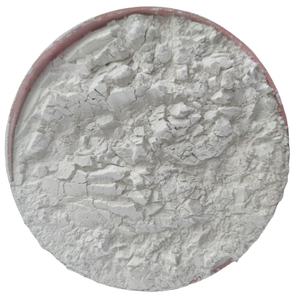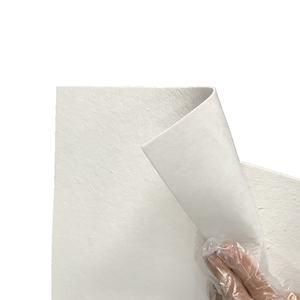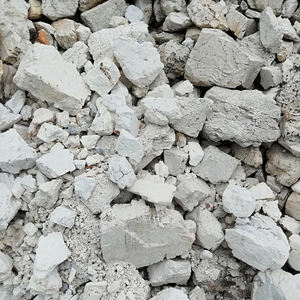Discover Premium Ceramic Products | Durability & Elegance United | Advanced Ceramics
1. Introduction
In a major development reported just 48 hours ago, a leading U.S. foundry announced the successful trial of a next-generation silicon carbide crucible that reduces metal contamination by 30% during aluminum alloy melting—a breakthrough attributed to ultra-high-purity SiC formulations. This news underscores the growing demand for advanced refractory materials in clean metal processing, and it sets the stage for a deeper look at what makes silicon carbide crucibles so indispensable.

Silicon carbide crucibles are not just containers—they’re engineered components that endure extreme thermal shock, chemical corrosion, and mechanical stress. But not all SiC crucibles are created equal. From reaction-bonded to sintered variants, and when compared to alternatives like silicon nitride or boron carbide, the differences in performance can dramatically impact efficiency, cost, and product quality.
2. Understanding Silicon Carbide Crucible Types
2.1. Reaction-Bonded vs. Sintered Silicon Carbide
Reaction-bonded silicon carbide (RBSC), often used in rbsic silicon carbide tile blocks and crucibles, is made by infiltrating porous carbon preforms with molten silicon. This yields a dense, strong structure with excellent thermal conductivity—but residual silicon can limit use in highly reducing atmospheres.
In contrast, sintered silicon carbide (SSiC) is formed under high temperature and pressure without binders, resulting in near-theoretical density and superior purity. While more expensive, SSiC is preferred for applications requiring minimal contamination, such as semiconductor or high-purity metal melting.
2.2. Additive Variations: Oxide vs. Non-Oxide Sintering Aids

Some manufacturers use alumina or yttria as sintering aids, which can slightly reduce thermal shock resistance but improve manufacturability. Others opt for boron-based additives to maintain purity—critical when comparing silicon carbide vs boron carbide performance in ultra-high-temp environments.
3. Silicon Carbide vs. Silicon Nitride: A Crucible Showdown
While silicon carbide crucibles dominate high-heat metal processing, silicon nitride crucibles—produced by specialized silicon nitride crucible factories—are gaining traction in niche applications like molten silicon handling due to their lower reactivity.
Silicon nitride ceramic components, including silicon nitride rings and custom silicon nitride heat shields, offer better fracture toughness but lower thermal conductivity than SiC. For instance, a silicon nitride plate may survive mechanical impact better, but a silicon carbide crucible transfers heat faster—ideal for rapid melting cycles.
The high purity silicon nitride powder market is expanding, yet cost and fabrication complexity keep SiC the go-to for most industrial crucibles.
4. Beyond Crucibles: The Expanding Universe of Silicon Carbide Ceramics

Silicon carbide’s versatility extends far beyond melting pots. It’s used in structural and functional ceramics across sectors:
- silicon carbide ceramic tiles for kiln linings
- silicon carbide burner nozzles in industrial furnaces
- silicon carbide bricks for refractory walls
- silicon carbide ceramic tubes for thermocouple protection and furnace use, including silicon carbide thermocouple protection tubes and silicon carbide porous ceramic tubes
- silicon carbide discs and grinding discs for precision machining, such as silicon carbide diamond grinding disc for pottery
- even consumer goods like silicon carbide ceramic baking dishes, silicon carbide ceramic dinner plates, and silicon carbide ceramic serving bowls
Interestingly, products like silicon carbide baking dish staub or silicon carbide ceramic casserole dish with lid blend industrial-grade durability with kitchen aesthetics—showcasing how advanced ceramics are entering everyday life.
5. Performance Trade-Offs: Boron Carbide vs. Silicon Carbide
When evaluating boron carbide vs silicon carbide, hardness favors boron carbide (one of the hardest known materials), but SiC wins in thermal conductivity, oxidation resistance, and cost-effectiveness.
Boron carbide is rarely used for crucibles due to its brittleness and high cost. Silicon carbide, by contrast, offers the best balance of strength, thermal stability, and affordability—making it the default for 90% of high-temp crucible applications.
6. Manufacturing & Customization Trends
Modern facilities now offer custom geometries—from silicon carbide ceramic columns to silicon carbide ring seals—tailored for specific furnace or chemical reactor designs. Handcrafted options like silicon carbide handcrafted ceramic plates or silicon carbide ceramic childrens plates reflect a growing artisanal market, though industrial users prioritize consistency over aesthetics.
Even plumbing components are evolving: silicon carbide ceramic disc taps and silicon carbide ceramic disk for tap systems leverage SiC’s wear resistance for long-life valve operation.
7. Conclusion
Silicon carbide crucibles remain unmatched for most high-temperature industrial processes, thanks to their unique blend of thermal, chemical, and mechanical properties. While alternatives like silicon nitride offer advantages in specific scenarios, and boron carbide excels in hardness, SiC’s versatility—from furnace tubes to dinnerware—cements its role as a cornerstone of modern ceramics. As purity and manufacturing techniques improve, expect even broader adoption across energy, metallurgy, and consumer goods.
Our Website founded on October 17, 2012, is a high-tech enterprise committed to the research and development, production, processing, sales and technical services of ceramic relative materials such as 7. Our products includes but not limited to Boron Carbide Ceramic Products, Boron Nitride Ceramic Products, Silicon Carbide Ceramic Products, Silicon Nitride Ceramic Products, Zirconium Dioxide Ceramic Products, etc. If you are interested, please feel free to contact us.
